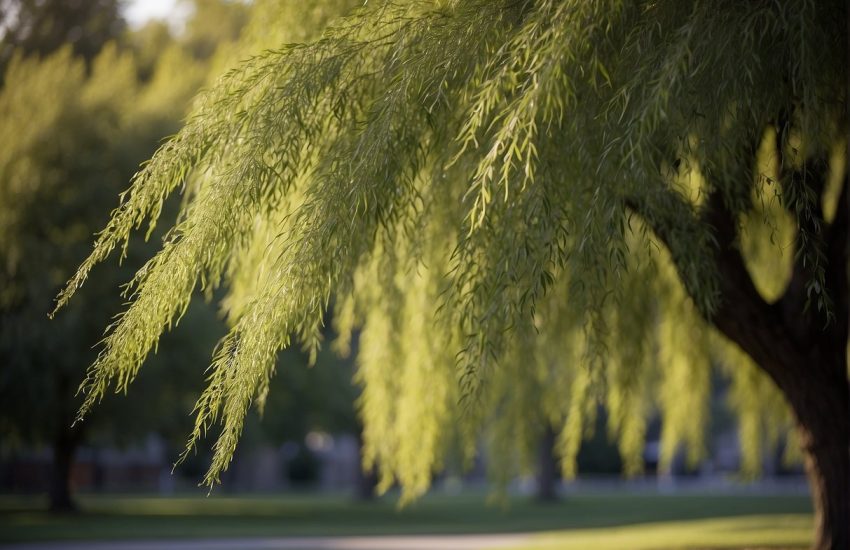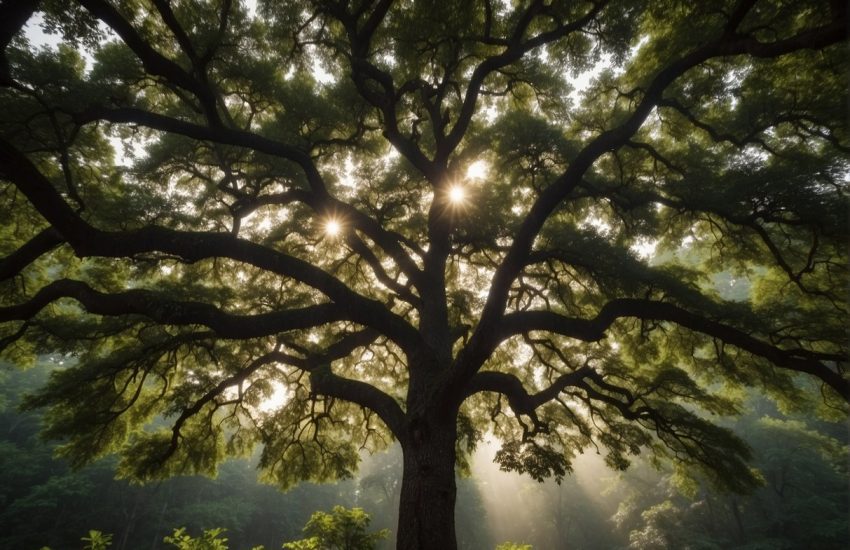Maple Trees in Kansas: Varieties and Growing Tips
Maple trees are a common sight in many parts of the United States, but what about Kansas? While not typically associated with maple trees, Kansas is home to several species of these beloved trees. From their stunning fall foliage to their valuable syrup production, maple trees in Kansas are worth exploring.

One of the most common species of maple trees found in Kansas is the silver maple. These trees can grow up to 100 feet tall and are known for their distinctive, silvery bark. They are often planted in urban areas for their shade and aesthetic value. Another species found in Kansas is the red maple, which is known for its vibrant red leaves in the fall. While not as common as the silver maple, the red maple can still be found throughout the state.
Maple trees are valuable for more than just their beauty. They are also a source of maple syrup, a beloved sweetener used in many dishes. While Kansas may not be known for its maple syrup production, there are still opportunities for locals to tap into this industry. With the right conditions and care, maple trees in Kansas can produce syrup that rivals that of other regions.
Types of Maple Trees in Kansas

Kansas is home to four types of maple trees: Sugar Maple, Red Maple, Silver Maple, and Boxelder Maple. Each of these trees has distinct characteristics that make them unique.
Sugar Maple
The Sugar Maple, also known as Acer saccharum, is a native species to North America. This hardy tree is found in eastern North America and is known for its beautiful fall foliage. The Sugar Maple is a popular tree for its sap, which is used to make maple syrup. It is also a popular choice for landscaping due to its hardiness and attractive appearance.
Red Maple
The Red Maple, also known as Acer rubrum, is a deciduous tree that is native to North America. This tree is also known as the Swamp Maple due to its ability to grow in wet areas. The Red Maple is a fast-growing tree that is often used in windbreaks and for erosion control. It is also a popular choice for landscaping due to its attractive fall foliage.
Silver Maple
The Silver Maple, also known as Acer saccharinum, is a fast-growing tree that is native to North America. This tree is often found in floodplains and is known for its ability to grow in wet areas. The Silver Maple is a popular choice for landscaping due to its fast growth and attractive appearance.
Boxelder Maple
The Boxelder Maple, also known as Acer negundo, is a native species to North America. This tree is also known as the Ash-leaved Maple due to its leaves resembling those of an ash tree. The Boxelder Maple is a fast-growing tree that is often used in windbreaks and for erosion control. It is also a popular choice for landscaping due to its attractive appearance.
In conclusion, Kansas is home to four types of maple trees, each with its own unique characteristics. Whether for landscaping or practical purposes, these trees are a great addition to any outdoor space.
Growing Conditions and Care

Soil Requirements
Maple trees in Kansas grow best in well-drained soil that is slightly acidic. They can tolerate clay soils, but poorly drained soils should be avoided. Adding organic matter to the soil, such as compost or peat moss, can improve soil structure and nutrient content.
Watering and Drought Tolerance
Maple trees require regular watering, especially during their first few years of growth. They can tolerate drought once established, but prolonged periods of drought can cause stress and reduce growth. Mulching around the base of the tree can help retain moisture in the soil.
Sunlight and Shade
Maple trees in Kansas prefer full sun to partial shade. They can tolerate some shade, but too much shade can cause reduced growth and leaf size. When planting a maple tree, it is important to consider its mature size and ensure it has enough space to grow without being crowded by other trees or structures.
Overall, maple trees are fast-growing, shade trees that are well-suited for Kansas landscapes. They are tolerant of urban pollution and can provide a beautiful addition to any yard or public space. With proper care and attention to soil and water needs, maple trees can thrive in a variety of growing zones and soil types.
Pests and Diseases
Common Pests
Maple trees in Kansas are susceptible to various insect pests that can cause significant damage to the tree’s leaves, bark, and overall health. Some of the most common pests that affect maple trees in Kansas include:
- Japanese Beetles: These beetles feed on the leaves of maple trees, causing them to turn brown and wilt.
- Scale Insects: These insects suck sap from the tree, causing yellowing and wilting of the leaves.
- Aphids: These tiny insects feed on the sap of the tree, causing the leaves to curl and turn yellow.
Preventative measures such as regular pruning, fertilizing, and watering can help reduce the risk of infestation. Insecticides can also be used to control pest populations.
Disease Management
Maple trees in Kansas are also susceptible to various diseases caused by fungi and bacteria. Some of the most common diseases that affect maple trees in Kansas include:
- Verticillium Wilt: This disease is caused by a fungus that attacks the roots of the tree, causing wilting and yellowing of the leaves.
- Anthracnose: This disease is caused by a fungus that attacks the leaves of the tree, causing brown spots and leaf drop.
- Powdery Mildew: This disease is caused by a fungus that attacks the leaves of the tree, causing a white powdery coating on the leaves.
To manage these diseases, it’s important to maintain proper tree care practices such as pruning, fertilizing, and watering. Fungicides can also be used to control disease outbreaks. It’s important to note that some diseases may require professional treatment to fully eradicate.
Maple Tree Uses and Benefits

Maple trees are an important source of lumber and are often used in furniture making due to their strength and durability. Maple wood is known for its beautiful grain patterns and is commonly used in cabinetry, flooring, and decorative woodwork. The wood is also used in the production of musical instruments such as guitars and violins due to its excellent acoustic properties.
In addition to its use as lumber, maple trees are also a source of delicious maple syrup. Maple syrup is made by tapping the trees in the springtime and collecting the sap, which is then boiled down to create the sweet, sticky syrup. Maple syrup is a popular natural sweetener and is used in a variety of recipes, from pancakes and waffles to desserts and cocktails.
Maple trees are also a popular ornamental tree due to their beautiful fall foliage and overall aesthetic appeal. They are often planted in parks, gardens, and along streets to provide shade and visual interest. The trees are also a popular choice for landscaping and can be used to create privacy screens and windbreaks.
Finally, maple wood is a popular choice for woodworking due to its strength, durability, and attractive grain patterns. Woodworkers use maple to create a variety of items, from cutting boards and kitchen utensils to furniture and decorative items.
Overall, maple trees are an important natural resource with a wide range of uses and benefits. From lumber and furniture making to maple syrup production and ornamental landscaping, these trees are a valuable addition to any environment.


